The Problem:
Political polarization is fueled by the consumption of misinformation and misrepresented data.
Insights to Gain:
Understanding the influences that shape the increasingly polarized political orientation of America.
Polarization
Summary: The American landscape has become increasingly polarized in terms of political affiliation.

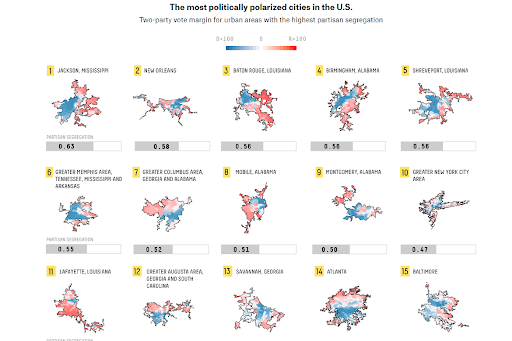
This gives us an idea of polarization in a geographical sense. Here, we can see how densely populated areas are largely “divided” by affiliation. Personally, I believe clustering ideological views together heavily fuels further polarization.
Takeaways
- Prevent the widespread use of gerrymandering by requiring stricter criteria for redistricting and including the local population in the process.
- Encourage political candidates to tackle a broader base and general issues (instead of zeroing in on extreme issues/views). One proposed method is Ranked Choice Voting, a repeated process where citizens rank candidates and votes are distributed until a candidate obtains a majority.
To-Do: Review trends in polarization and legislation attempts for equality (look into its effects in data vis. form).
Consumption
Summary: Mainstream consumption is rarely neutral and is experiencing a greater shift to social media from news companies.
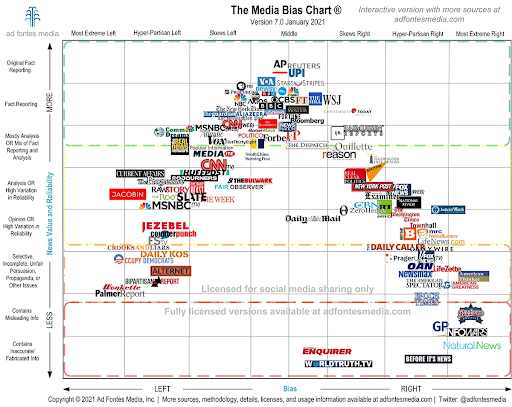
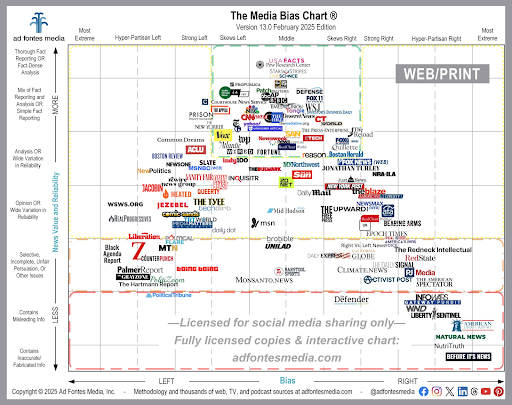
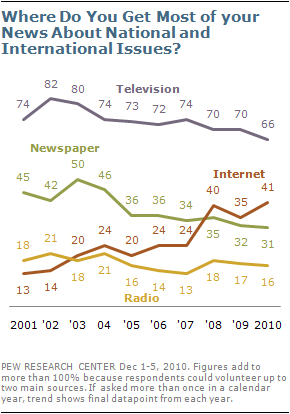
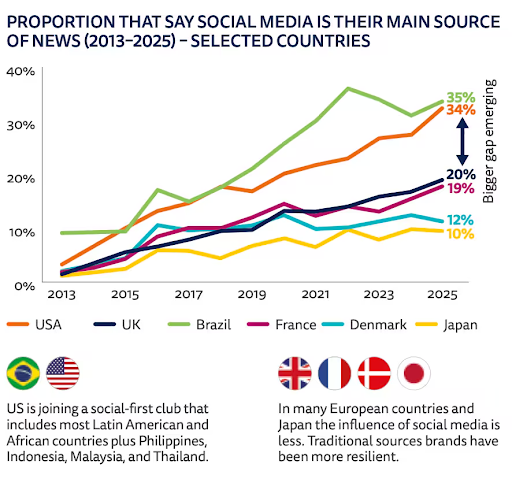
Social media has become an increasingly popular source of news. Since creators on these platforms face less scrutiny for credibility and fact-checking, this can have large implications for accurate consumption.
Takeaways
- Encourage reduced social media consumption by highlighting the potential downsides of excessive reliance on social media.
- Make polls and research more readable and readily available (similar to how news companies transitioned from physical newspapers to mobile applications and newsletters).
To-Do: Find data into political aptitude and how people engage with politics (compare to above graphs).
Misinformation
Summary: Perhaps the most influential aspect that feeds into polarization is misinformation and data misrepresentation. Without proper facts, we cannot make informed decisions and are subject to more extreme views and interpretations.

(Side Note: I believe that most people do not engage these sources in a manner that promotes investigation into the reliability of their feed, but rather take things at the surface level.)
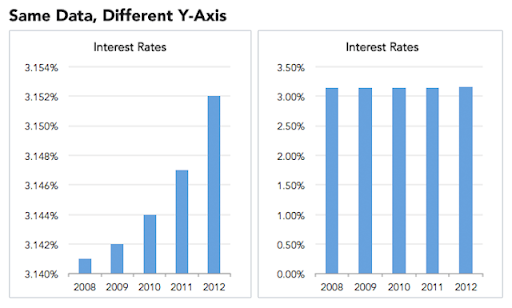
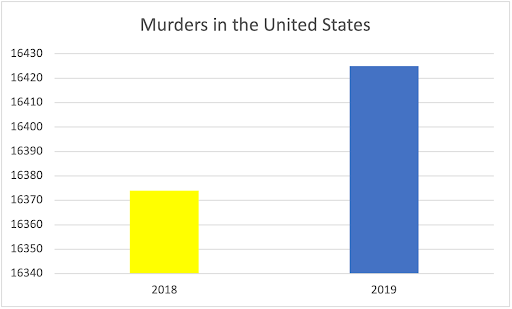
Above are two examples of how data visualization can be exploited to mislead the viewer. In social media, where posts are typically viewed for mere seconds, this can be a huge problem for those who take this type of information at face value.
Takeaways
- Take further steps to fact-check social media posts (e.g., flag/penalize users for repetitive misinformation).
- Prevent impactful data from being viewed in the same capacity as short-form content; represent it separately so viewers are inclined to devote time to reviewing it and forming their own opinions.
To-Do: Find ways you can increase the credibility of your sources and notice misinformation when viewing short-form content.
Conclusion
Tackling political polarization and misinformation should begin with the acknowledgement that we are all biased and impressionable; only then can we take the first actionable steps. In terms of data, ensuring accurate information, correctly presenting sources (while encouraging viewers to look further into where their data is coming from), and shifting back to more reliable sources of information (e.g., the news), we can prevent the widespread influence of misinformation and misrepresented data to improve political aptitude and discourse among ourselves and others.
Sources:


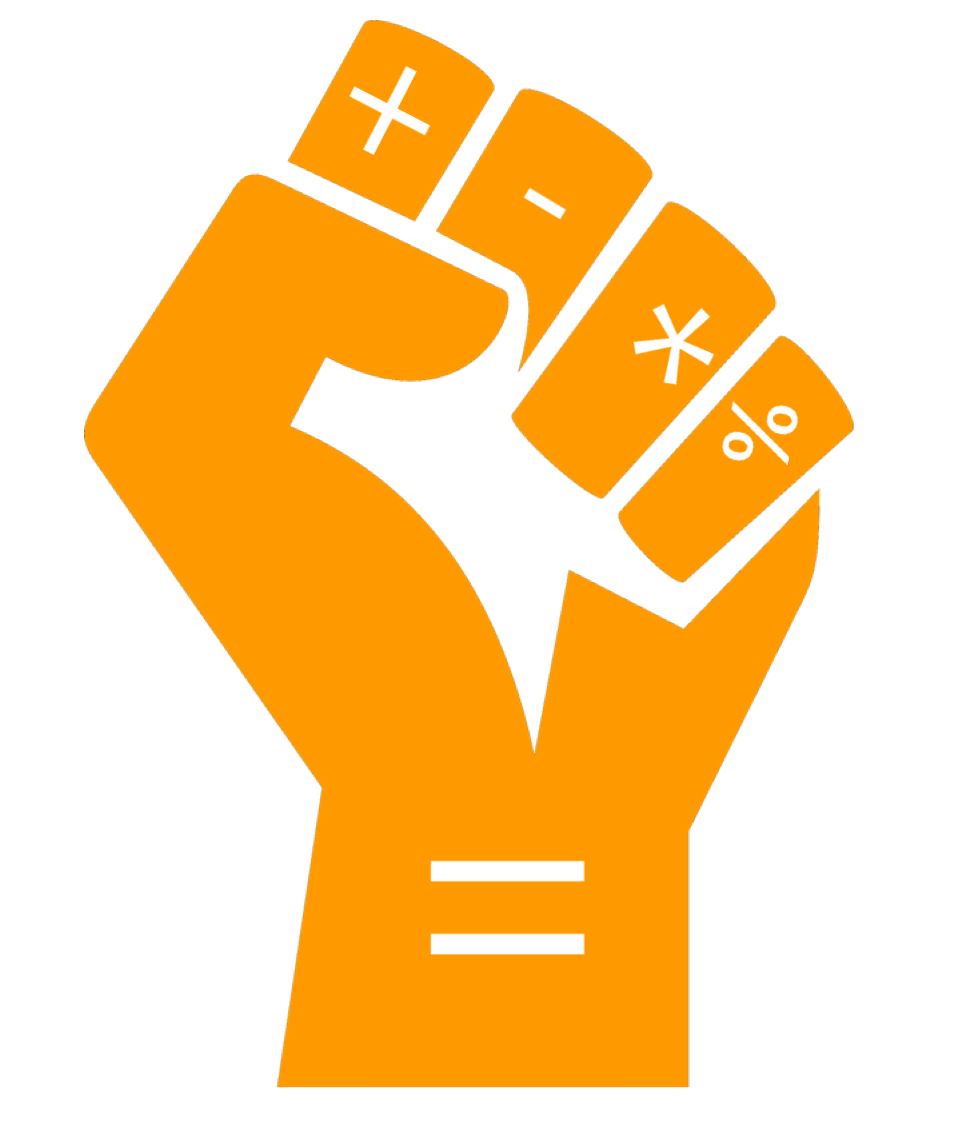
Using these sources: Look into interpretations of data and how it can be easily exploited. Think of topics you are interested in and review data visualizations related to that topic.